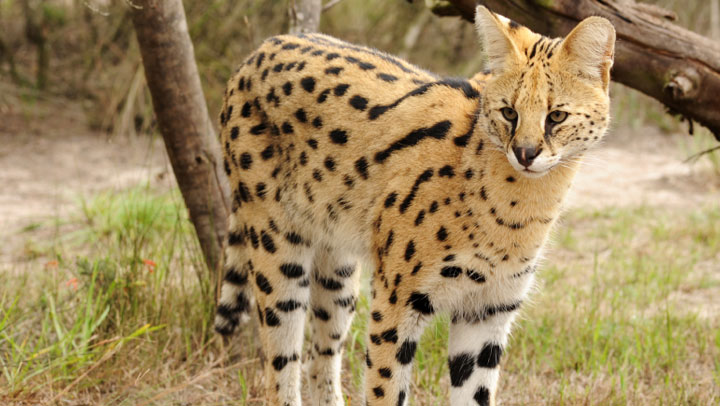Reproduction and Genetics
“ F1 GENERATION SAVANNAHS ARE VERY DIFFICULT TO PRODUCE, DUE TO THE SIGNIFI- CANT DIFFERENCE IN GESTATION PERIODS BETWEEN THE SERVAL AND A DOMESTIC CAT ”
As Savannahs are produced by crossbreeding Servals and domestic cats, each generation of Savannahs is marked with a filial number. For example, the cats produced directly from a Serval/domestic Cat cross are the F1 generation, and they are 50% serval.
F1 generation Savannahs are very difficult to produce, due to the significant difference in gestation periods between the Serval and a domestic cat (75 days for a Serval and 65 days for a domestic cat), and sex chromosomes. Pregnancies are often absorbed or aborted, or kittens are born prematurely. Servals can be very picky in choosing mates, and often will not breed a domestic cat.
F1 SAVANNAHS
F1 Savannahs can be as high as 75%. 75% F1's are normally the offspring of a 50% F1 female bred back to a Serval. There have been cases of 87.5% F1 Savannah cats but it is currently not known if they survived to full maturity and fertility is questionable at those percent Serval levels. More common than a 75% F1 is a 62.5% F1 which is the product of a "A" F2 (25% Serval, female) bred back to a Serval. The F2 generation, which has a Serval grandparent and is the offspring of the F1 generation female, ranges from 25% to 37.5% Serval. The F3 generation has a Serval great grandparent, and is 12.5% Serval.
BREEDING CODES
A Savannah/Savannah cross may also be referred to by breeders as SVxSV (SV is the TICA code for the Savannah breed), in addition to the filial number. Savannah generation filial numbers also have a letter designator that refers to the generation of SV to SV breeding. The letters are A, B, C and SBT. A designation of A means that one parent is a Savannah and the other is an outcross. B is used for both parents are Savannahs with one of then being an "A". "C" is both parents are Savannahs and one of them is a "B". Therefore A x (any SV) = B; B x (B,C,SBT) = C; C x (C, SBT) = SBT, SBT x SBT = SBT. F1 generations Savannahs are always A since the father is a non-domestic outcross (the Serval father). F2 generation can be A or B. F3 generation can be A, B or C. F4 Generation is the first generation that can be a championship breed SBT.
HYBRID CATS
Being Hybrids, Savannahs typically exhibit some characteristics of hybrid inviability. Because the male Savannah is the heterozygous sex, they are most commonly affected, in accordance with Haldane's rule. Male Savannahs are typically larger in size and sterile until the F5 generation or so, although the females are fertile from the F1 generation. As a result, females of the F1-F3 generation are usually held back for breeding, with only the males being offered as pets. The reverse occurs when you reach F5 generation, but to a lesser degree, with the males being held as breeding cats, and females primarily offered as pets.




